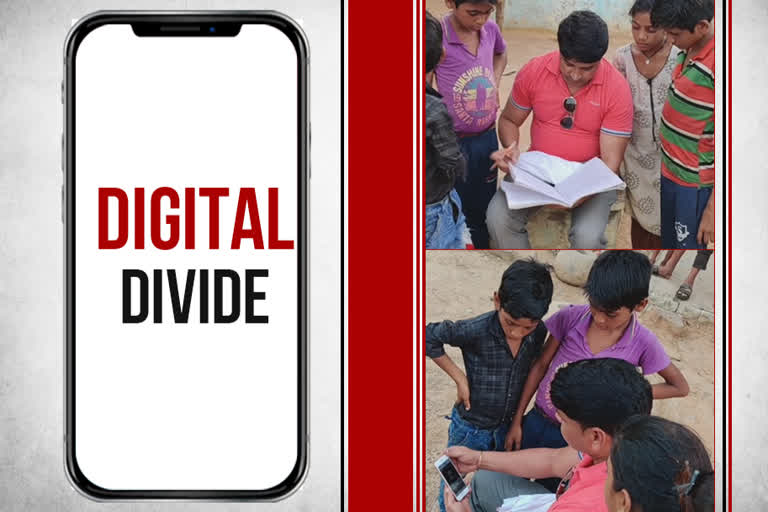Nuh (Haryana): With the global pandemic of COVID-19 forcing several sectors to undertake major fundamental changes, the education sector in India is divided over imparting online education as a routine for children.
Since the nationwide lockdown came into effect on March 25 to contain the spread of the coronavirus disease, schools across the country have suspended classes.
Central and State governments claim to have taken the online route, however, several students do not have regular access to such devices. From affordability to accessibility, several students across the country continue to struggle.
The current digital divide is an important issue in our society and has been found to have a direct link to low educational attainment.
Already backward in the field of education, Haryana's Nuh district is also facing the challenge of 'Digital Divide'.
According to the officials, concrete steps are being taken in the field of online education, facilities like EduSAT, cable network, WhatsApp are being provided to students.
The District Education Department claims that 60 per cent of students are doing their studies online.
"The region is backward, people in the remote areas don't have access to television, only 27% of students are learning through television. However, around 60% of students in the district have joined online classes," Anoop Singh Jakhad, District Education Officer said.
In order to verify the ground realities of online education in Nuh district, ETV Bharat interacted with some students in the rural area, who admitted that they were facing challenges in attending online classes. "Many students in the district don't have access to smartphones, there are network issues and along with this there are frequent power cuts in the region," Karan, a student said.
Thus, despite the claims made by the governments over the successful implementation of online methods of teaching, students in several remote areas are still struggling to get access to these devices and adapt themselves to this new way of teaching.



